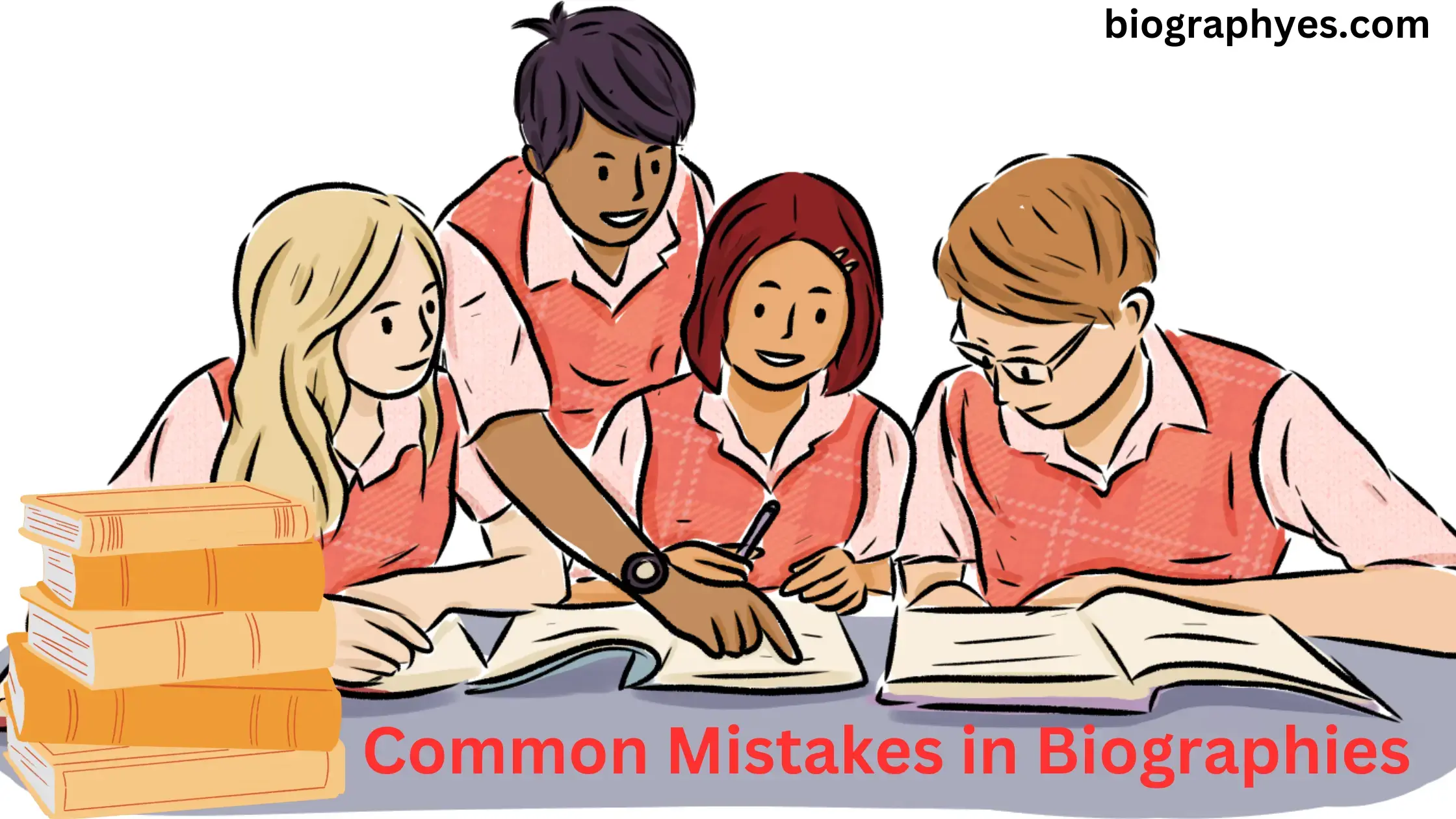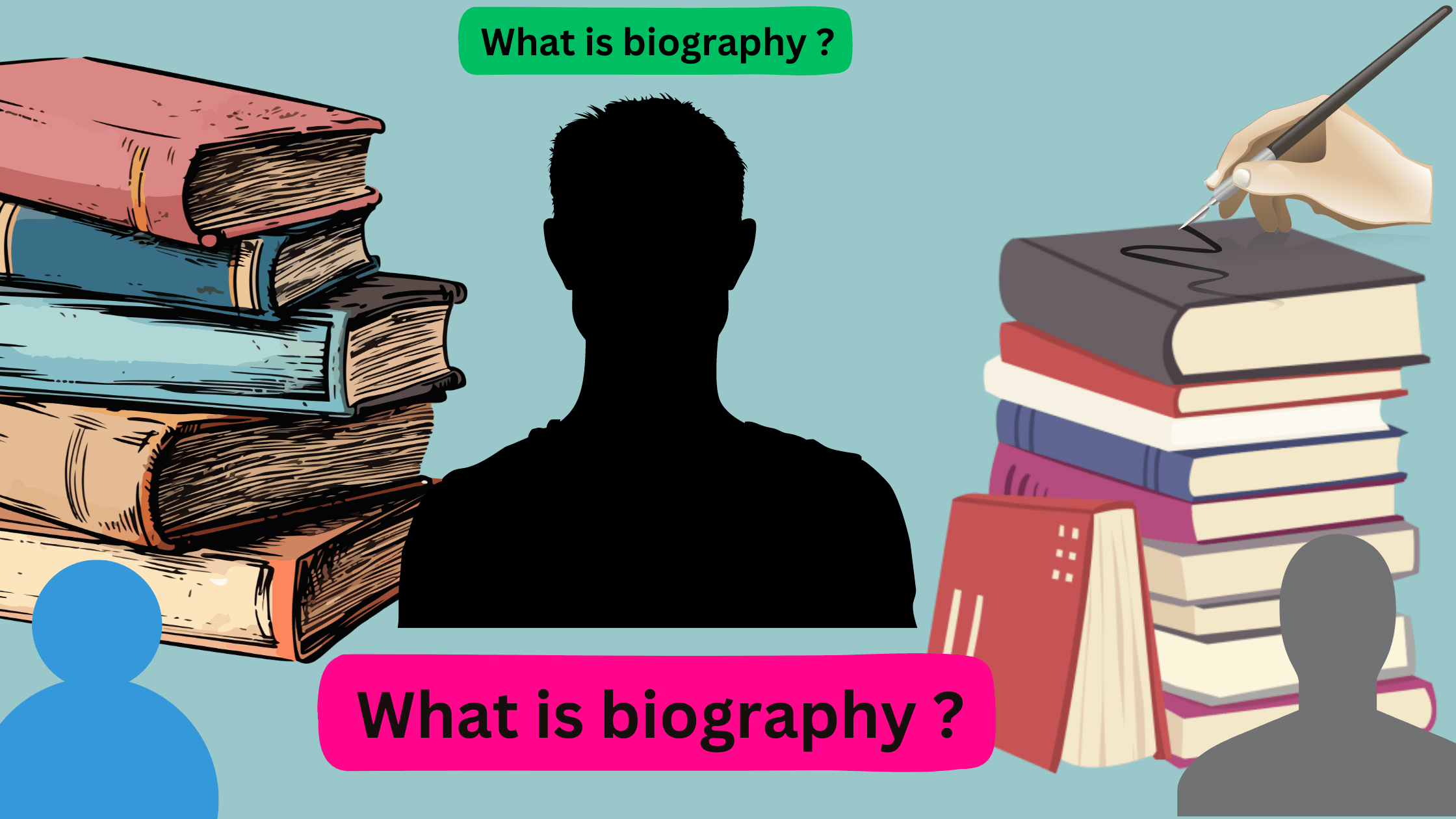Avoiding Common Mistakes in Biographies
When it comes to writing biographies, avoiding common mistakes is essential to capture the true essence of a person’s life. In this article, we will delve into the most frequent errors made in biographical writing and provide valuable tips to avoid them. Whether you are an aspiring biographer or a seasoned writer, understanding these pitfalls is crucial to create a compelling narrative that resonates with readers.
From inaccurate facts and exaggerated claims to a lack of research and biased perspectives, there are numerous mistakes that can compromise the integrity and impact of a biography. We will explore each mistake in detail, offering practical advice and techniques to steer clear of them.
By delving deeper into the common errors made in biographies, you will gain a deeper understanding of how to approach your own biographical projects with precision and finesse. Whether you are writing for pleasure or for a professional purpose, this article will equip you with the necessary tools to ensure your biographies are accurate, engaging, and memorable.
The importance of a well-written biography
Biographies hold a unique power to captivate, inspire, and enlighten readers. They offer a window into the lives of extraordinary individuals, revealing their triumphs, struggles, and the essence of what made them truly remarkable. A well-crafted biography has the ability to transport the reader, fostering a deep connection and understanding of the subject’s journey.
Crafting an impactful biography requires meticulous attention to detail, extensive research, and a keen understanding of the art of storytelling. The biographer’s task is to breathe life into the subject, to paint a vivid portrait that resonates with the reader and leaves a lasting impression. By delving into the complexities of a person’s life, a skilled biographer can uncover the nuances, the defining moments, and the underlying motivations that shaped their path.
Beyond mere facts and chronologies, a well-written biography should strive to capture the essence of the individual, revealing their unique personality, their passions, and the pivotal decisions that defined their legacy. It is this ability to bring the subject to life on the page that distinguishes a remarkable biography from a mere recitation of events. By mastering the art of biographical writing, authors can create works that inspire, educate, and captivate readers, leaving an indelible mark on their understanding of the human experience.
Common mistakes to avoid in biographies
Crafting a compelling and accurate biography is a delicate balance, and even the most seasoned writers can fall prey to common pitfalls. Recognizing and avoiding these mistakes is essential to ensure the integrity and impact of your biographical work. In this section, we will explore the most frequent errors made in biographical writing and provide strategies to overcome them.
Overemphasizing achievements and accolades
One of the most common mistakes in biographies is the tendency to overemphasize the subject’s achievements and accolades at the expense of their personal experiences and character development. While it is important to highlight the individual’s remarkable accomplishments, an excessive focus on awards, honors, and professional milestones can create a one-dimensional portrait that fails to capture the full complexity of the person.
Biographers must strike a careful balance between acknowledging the subject’s notable achievements and delving into the personal narratives, struggles, and defining moments that shaped their journey. By weaving these elements together, the reader gains a more holistic understanding of the individual, their motivations, and the challenges they overcame to reach their goals.
Avoiding the trap of overemphasizing achievements requires a deeper exploration of the subject’s life, uncovering the nuances and personal experiences that add depth and authenticity to the narrative. This approach not only creates a more engaging and relatable biography but also helps to humanize the subject, making their story more accessible and impactful to the reader.
Neglecting personal anecdotes and experiences
Another common pitfall in biographical writing is the tendency to overlook the personal anecdotes and experiences that provide valuable insights into the subject’s character and personality. While the major events and accomplishments in a person’s life are undoubtedly important, it is the smaller, more intimate moments that often reveal the true essence of an individual.
Biographers must be diligent in their research, seeking out not only the well-known facts and milestones but also the lesser-known stories, personal reflections, and everyday experiences that add richness and authenticity to the narrative. These anecdotes and vignettes can shed light on the subject’s values, relationships, and the unique quirks that make them truly human.
By incorporating these personal elements into the biography, the writer can create a more immersive and engaging reading experience, allowing the reader to connect with the subject on a deeper level. This approach not only enhances the overall narrative but also helps to distinguish the biography from a mere recitation of facts and achievements.
Failing to capture the individual’s essence and personality
One of the most challenging aspects of biographical writing is capturing the true essence and personality of the subject. It is not enough to simply recount the facts and events of a person’s life; the biographer must strive to bring the individual to life on the page, revealing their unique traits, idiosyncrasies, and the intricacies that make them truly remarkable.
Achieving this level of depth and authenticity requires a deep understanding of the subject, gained through meticulous research and a willingness to delve into the complexities of their character. The biographer must be adept at weaving together the various facets of the individual’s life, from their personal relationships and emotional experiences to their philosophical beliefs and decision-making processes.
By crafting a narrative that showcases the subject’s personality, the biographer can create a compelling and immersive reading experience that resonates with the audience. This approach not only illuminates the individual’s journey but also invites the reader to empathize, connect, and gain a deeper appreciation for the complexities of the human experience.
Inaccurate or outdated information
One of the most fundamental mistakes in biographical writing is the inclusion of inaccurate or outdated information. In an age of readily available information, readers expect biographies to be meticulously researched and factually reliable. Inaccuracies, whether they are in the form of dates, names, or historical details, can undermine the credibility of the work and erode the reader’s trust.
Biographers must be diligent in their research, cross-checking information from multiple reliable sources to ensure the accuracy and currency of their facts. This may involve consulting primary sources, such as personal documents, interviews, and archival materials, as well as secondary sources like scholarly articles, biographies, and historical records.
By taking the time to thoroughly vet and verify the information included in the biography, the writer can create a work that is not only engaging but also trustworthy and reliable. This attention to detail not only enhances the overall quality of the biography but also demonstrates the biographer’s commitment to providing readers with a comprehensive and accurate portrayal of the subject’s life.
Lack of organization and structure
A well-written biography requires a clear and cohesive structure that guides the reader through the subject’s life in a logical and engaging manner. A lack of organization can result in a disjointed narrative that fails to effectively convey the subject’s story, leaving the reader feeling confused and disconnected.
Successful biographers understand the importance of crafting a narrative arc that follows a clear chronological order, with strategic use of flashbacks, thematic divisions, and other structural devices to enhance the reading experience. By establishing a strong organizational framework, the writer can ensure that the biography flows seamlessly, allowing the reader to follow the subject’s journey with ease and clarity.
Moreover, a well-structured biography should also incorporate elements of storytelling, such as character development, conflict, and resolution, to create a more immersive and compelling narrative. This approach not only makes the biography more engaging but also helps the reader to better understand the subject’s motivations, challenges, and personal growth over time.
Not engaging the reader with storytelling techniques
Biographies that solely focus on facts and chronologies often fall short in captivating the reader’s attention. Successful biographers understand the importance of incorporating storytelling techniques to create a more engaging and impactful reading experience.
By employing narrative devices such as dialogue, vivid descriptions, and emotional resonance, the biographer can transform a factual account into a gripping and immersive story. This approach not only helps to bring the subject to life on the page but also fosters a deeper connection between the reader and the individual being profiled.
Effective use of storytelling techniques can also help to highlight the most significant moments and turning points in the subject’s life, allowing the reader to better understand the context, motivations, and consequences of their actions. This, in turn, can lead to a more nuanced and empathetic understanding of the individual, ultimately enhancing the overall impact of the biography.
Ignoring the target audience and their interests
One of the most common mistakes in biographical writing is the failure to consider the target audience and their specific interests and needs. Biographers must be attuned to the preferences, expectations, and cultural contexts of their readers in order to craft a biography that resonates and provides genuine value.
By understanding the target audience, the biographer can tailor the narrative, tone, and level of detail to ensure that the biography meets the needs and interests of the readers. This may involve emphasizing certain aspects of the subject’s life, framing the narrative in a way that aligns with the audience’s perspectives, or even incorporating elements of popular culture or current events to create a more relatable and engaging reading experience.
Ignoring the target audience can result in a biography that falls flat, failing to captivate the reader or provide the insights and information they are seeking. By keeping the audience at the forefront of the writing process, the biographer can create a work that not only tells a compelling story but also resonates deeply with those who engage with it.
Crafting an impactful and error-free biography
In the pursuit of crafting a compelling and impactful biography, writers must be vigilant in avoiding the common pitfalls that can undermine the integrity and effectiveness of their work. From overemphasizing achievements to neglecting personal anecdotes and experiences, the mistakes outlined in this article represent some of the most prevalent challenges faced by biographers.
By recognizing these potential pitfalls and implementing strategies to overcome them, writers can create biographies that captivate, inspire, and enlighten readers. Through meticulous research, a keen eye for detail, and a mastery of storytelling techniques, biographers can bring their subjects to life on the page, fostering a deep connection between the reader and the individual being profiled.
Ultimately, the art of biographical writing is a delicate balance, requiring a deep understanding of the subject, a commitment to accuracy and authenticity, and a willingness to explore the nuances and complexities of the human experience. By embracing these principles and avoiding the common mistakes outlined in this article, biographers can craft works that leave a lasting impact on their readers and contribute to the rich tapestry of human stories that shape our collective understanding of the world.


